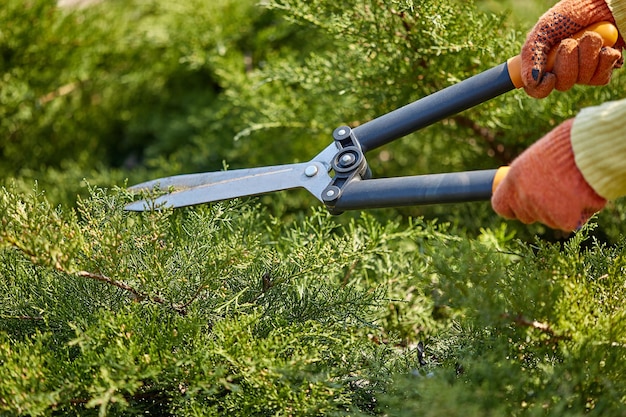
The oppressive heat of the summers has made it possible for clouds to gather above us and for the rain to pour down onto our towns. When the monsoon arrives, there is a distinct change in the weather, specifically a drop in temperature as well as a predominant presence of humid air. But much more than that, there are dazzling colors that, when complemented by rains, look even more vivacious and animated.
These are the hues of the blooms that may be seen on plants that are in full bloom during this time of year. This is also the time of year when plants receive their natural nourishment in the form of rains, and as a result, they develop and bloom more quickly than they do at other times of the year — the ideal experience for people who are passionate about plants.
Planting new seeds and re-potting existing plants during the rainy season will help you attain a flourishing garden in your home more naturally, while simultaneously minimizing the amount of work that is required for the garden’s development and ongoing upkeep. The lower temperatures and increased humidity in the air both contribute to the acceleration of plant development.
![]()
Having said that, the monsoon season is also the time of year when your garden requires additional care and protection from pests, algae, and weeds that are not wanted. The following are some of the steps you may take to maintain the health and beauty of your garden throughout the rainy season and throughout the year:
- For Home Gardening Trim/ prune regularly to enable fresh growth:
- When there is a strong windstorm, any long branches that are present in your trees run the risk of being blown away or of wreaking havoc on the rest of your garden. You should prune the branches of your trees and remove any leaves that are withered and dead, as well as any additional growth that may have developed. It is best to perform any necessary plant pruning and trimming either soon before the season begins or while it is underway in order to encourage flower budding and prevent wild growth.

- If you notice that your flowers are beginning to wilt, cut them off at the stem, and give your lawn a good mowing to give it some new vitality. Your garden will look neater if you use hedging, choose stems or leaves that are damaged for selective cropping of the foliage. This also encourages the growth of new shoots and ensures that all of the plants receive an equal amount of air, sunlight, and minerals.
- Ensure proper drainage in Monsoon:
- If good drainage is not maintained or little puddles accumulate in your garden, then you may experience waterlogging during the rainy season. This is a related problem. The surplus water should be drained away, and you should check that the drainage system is working properly.
- Not only does stagnant water limit plant growth by rotting its roots, but it also provides a breeding ground for insects, worms, mosquitoes, and other pests that are hazardous to both your garden and your own health. This may be a double-edged sword. Maintaining a garden with pots that contain small holes that allow the stored rainwater to pass through will help you avoid this problem.
- Fertilize enough in Monsoon:
- The use of natural fertilizers in your plants by way of composting, manuring, and mulching around the plants is a healthier and more effective strategy than the use of chemical fertilizers due to the fact that required nutrients permeate through the soil with the rains. Because the pores of the plants are opened up when it rains, the plants are able to immediately take in the compost once it has been utilized.

- Composting the leftovers from your kitchen, such as eggshells, used tea bags, and other items will help to improve the quality of the soil, as well as maintain and restore the garden.
- Applying a layer of material (nutrients) on top of the soil is what we mean when we talk about mulching. Because of this, plants are able to obtain the necessary nutrition and develop in a healthy manner.
- Harvest rainwater in Monsoon:
- Rainwater collection is the most effective method during the monsoon season for providing nourishment to your garden. During this time of year, you need to be careful not to overwater your plants. Only water the plant if the leaves begin to droop and fall off or if the soil becomes dry.
- You can collect the rainwater and then utilize it to re-hydrate your plants and promote healthy growth by using sprinklers to apply the water. Sprinklers serve to ensure that all of your plants, trees, and shrubs receive uniform nourishment, which paves the way for a luxuriant garden that is appropriately watered and nourished.
- For Home Gardening make a careful choice of plants/ provide shade:
- There are a few kinds of vegetation that do particularly well during the wetter months of the year. There is a variety of them, but some of them are the Cape Jasmine, the gloriosa lily, the hibiscus, the wild balsam, the dahlias, the marigolds, and the water hyacinth. Only those plants and bushes should be planted during this season that is able to cope with the harsh conditions and high levels of moisture that this time of year brings.
- Protecting immature plants or plants that are unable to adapt to the change in seasons can be accomplished with the help of perforated sheets used as shades. Shade trees not only protect the soil from being washed away during storms but also make it possible for rainwater to reach and nourish the entirety of the outdoor space.
- Use biopesticides for Home Gardening:
Pests have the potential to destroy all of your young plants and saplings, as well as infringe upon the nutrients that are present in the soil. Pesticides should be sprinkled carefully in order to destroy these pests in a timely manner, particularly after pruning, as this is the time of year when new shoots sprout.

- For Monsoon Stop weeds and insect growth in Home Gardening:
- Because the precipitation and wind carry these unwelcome critters with them during the monsoon, weeds and insects are a regular concern during this season. The normal feeding and development of the plants can be inhibited when weeds are present.
- Your garden has to have the weeds removed before they can cause any harm. Even more so, insects will not be able to find a place to flourish in your garden if it turns into a natural habitat for hummingbirds, butterflies, frogs, bees, earthworms, and toads.
उत्कर्ष के संग आपकी हर फसल होगी सफल।
Available on UtkarshAgro.com | Amazon | Flipkart | AgriBegri | Bighaat | Moglix | Agrosiaa | Toolsvila | Agri junction | Krishisuvidha | Ecotika | Shopee | Bazzu.in
Visit Website: https://utkarshagro.com/
You can also Shop from: https://www.badikheti.com/utkarsh
𝐂𝐎𝐃 𝐚𝐧𝐝 𝐄𝐌𝐈 𝐨𝐩𝐭𝐢𝐨𝐧𝐬 𝐚𝐫𝐞 𝐧𝐨𝐰 𝐚𝐯𝐚𝐢𝐥𝐚𝐛𝐥𝐞.
May you have the best yield ever! Feel free to contact Utkarsh for any doubts and advice.
If you have any further queries, feel free to reach out to us on
Call: 8866543678 or chat: http://wa.me/918866543678
Call: 9924864422 or chat: http://wa.me/919924864422
Call: 9664961571 or chat: http://wa.me/919664961571
Landline: 02621-255972
Visit our website: https://utkarshagro.com/
Email ID: rd@utkarshagro.com
Stay connected with us to learn more tips and tricks. All you have to do is follow us here:
Facebook: https://www.facebook.com/utkarshagrochem/
Instagram: https://www.instagram.com/utkarshagrochem/
YouTube: https://www.youtube.com/c/UtkarshAgrochem
Twitter: https://twitter.com/UAgrochem
LinkedIn: https://www.linkedin.com/company/utkarsh-agrochem-pvt-ltd/
Pinterest: https://in.pinterest.com/utkarshagrochemsocial/
Written by:
Manya jobanputra
Affiliate Writer with Monkey Ads





